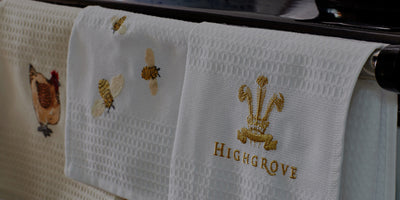Highgrove Gardens
Garden Tours
Events & Workshops
Back
- NEW! Halen Breathwork at Highgrove
- NEW! Botanical Casting Workshop with Clare Mahoney
- NEW! Sound Bath and Yoga Nidra with Rachael Thorogood & Angie Cottrell
- NEW! Cheese & Wine Tasting Experience with Private Garden Tour
- Candle Making Workshop with Natalie from Flourish & Leaf
- Floral Art with Resin Workshop with Emma from Nature's Inspiration
- Copper Foil Stained Glass Workshop with Sarah Davis
- **Sold Out** Modern Calligraphy Workshop with Mellor & Rose
The Highgrove Shop
Back
- Sovereign Celebrations
- Honey Bee Collection
- A Taste of Highgrove
- Rosie Sugden Cashmere Accessories
- Highgrove Heritage Collection
- Highgrove X Burberry
- Highgrove X Truefitt & Hill
- Highgrove Bouquet
- Wildflower Meadow Prints & Greeting Cards
- Royal Gardens Fine Bone China
- Turquoise Mountain
- His Majesty The King's Watercolour Collection
- Prince of Wales Check
- Fiona Rae Jewellery
- Miriam Collection
- Bramley Bath & Body
- Chelsea Porcelain
- Emma Stothard Willow Sculptures
- Terracotta Pots
Highgrove Crafts
Book Now
Events & Workshops
- NEW! Halen Breathwork at Highgrove
- NEW! Botanical Casting Workshop with Clare Mahoney
- NEW! Sound Bath and Yoga Nidra with Rachael Thorogood & Angie Cottrell
- NEW! Cheese & Wine Tasting Experience with Private Garden Tour
- Candle Making Workshop with Natalie from Flourish & Leaf
- Floral Art with Resin Workshop with Emma from Nature's Inspiration
- Copper Foil Stained Glass Workshop with Sarah Davis
- **Sold Out** Modern Calligraphy Workshop with Mellor & Rose
Workshops at Highgrove





